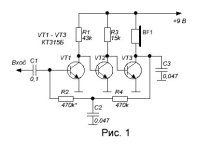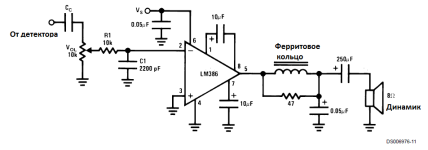Hi,
I purchased a small board with the PAM8403 chip. Each channel can do approx. 24 dB gain. I'm working on a simple project using a probe (coil) for interference pickup that I want to make audible (headphones).
I may need more gain than 24 dB and I don't need stereo output. I'm wondering if I can route the output of the first channel to the input of the second channel.
Both outputs seem to be isolated from the ground (measuring > 1MOhm). Is there a way to stack both amplifying sections to get a single channel with up to 48 dB gain?
Regards, Gerrit

I purchased a small board with the PAM8403 chip. Each channel can do approx. 24 dB gain. I'm working on a simple project using a probe (coil) for interference pickup that I want to make audible (headphones).
I may need more gain than 24 dB and I don't need stereo output. I'm wondering if I can route the output of the first channel to the input of the second channel.
Both outputs seem to be isolated from the ground (measuring > 1MOhm). Is there a way to stack both amplifying sections to get a single channel with up to 48 dB gain?
Regards, Gerrit
I'd be tempted to try a simpler solution first - see how low you can make the input resistor. The DS says the minimum is 18k but what happens if you reduce that to 2k? You might get more gain, has to be worth a punt.
Feeding an amp output into the other input will flood it with ultrasonics which usually destroys the SQ. But here that may not matter.
Feeding an amp output into the other input will flood it with ultrasonics which usually destroys the SQ. But here that may not matter.
Its a class D chip without output filter so I think only bad things might happen as the output will likely be strong enough to saturate the inputs.
And no its already bridged output on both channels, no output stacking I fear (but check the datasheet - some chips have a master/slave facility).
You need a preamp stage or stages, opamp(s) is simplest approach, at 5V a modern rail-to-rail low voltage opamp type would be appropriate, Microchip make a wide range for instance.
And no its already bridged output on both channels, no output stacking I fear (but check the datasheet - some chips have a master/slave facility).
You need a preamp stage or stages, opamp(s) is simplest approach, at 5V a modern rail-to-rail low voltage opamp type would be appropriate, Microchip make a wide range for instance.
Thanks for these comments. I will start with a single channel first and see how far I can get. I may experiment with a few things to get this working the way I want.
Regards, Gerrit
Regards, Gerrit
No! The 8403 is a class D amplifier with a carrier frequency of 500 kHz at the BTL output.
Use 386 chip.
The gain of this ac-coupled open-loop op amp is one million. Resistors R1 and R2 set the gain equal to -10
Use 386 chip.
The gain of this ac-coupled open-loop op amp is one million. Resistors R1 and R2 set the gain equal to -10


